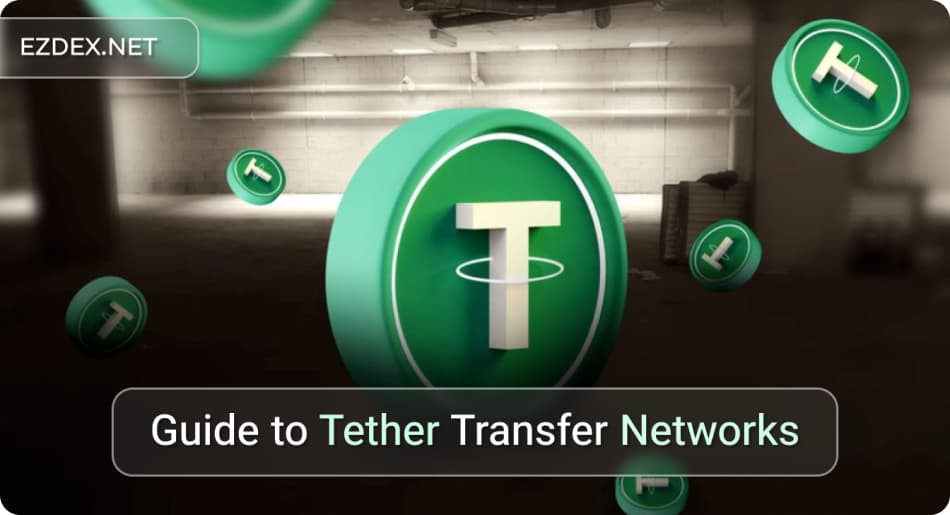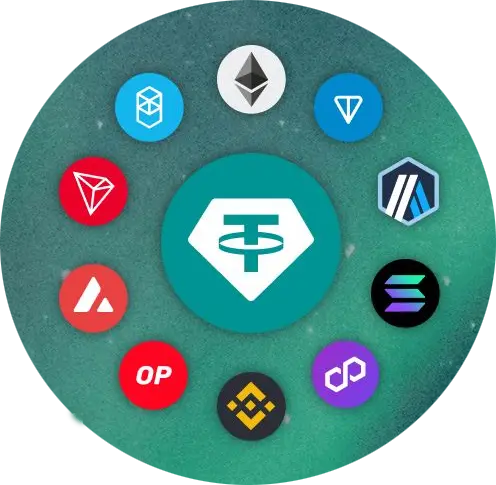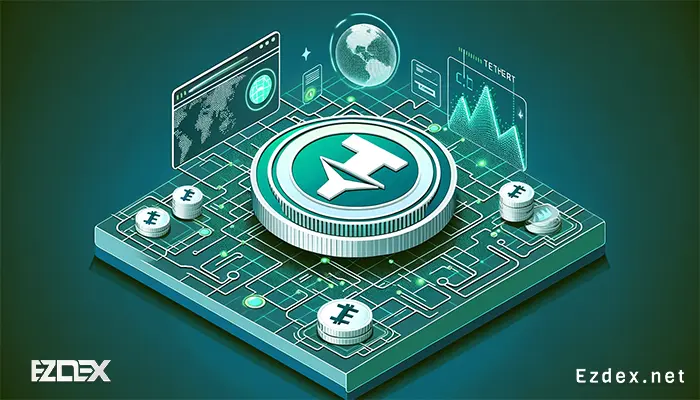Guide to Tether Transfer Networks | What Network to Send USDT?

Tether (USDT) is one of the most popular stablecoins in the cryptocurrency market, designed to maintain a stable value by being pegged to the US Dollar. As its adoption grows, so does the need to understand the different networks available for transferring USDT. By being available on multiple blockchains, Tether can cater to a broader audience of users and developers. In this guide, we will explore the key transfer networks for Tether, how they work, and compare them to help you choose the right one for your needs.
Table of Contents
What Are USDT Transfer Networks?
When you buy or sell USDT for cash or online and want to transfer your tokens to your wallet or someone else’s wallet, you need to choose a transfer network. Transfer networks are blockchains that your transfer is registered on them.
Each network has:
- Its own transaction fees
- Its own confirmation speed
- Its own wallet address format
- Different exchange support
Tether operates on multiple blockchain networks, offering users flexibility, scalability, and varying transaction costs. Each network has unique characteristics and is suitable for different use cases. By using a Tether transfer network, users can send USDT across wallets and platforms while leveraging the benefits of blockchain technology such as transparency and security.
USDT Networks List
Tether operates on major blockchains. USDT transfer networks list based on tether.to include:
- Ethereum (ERC-20)
- Tron (TRC-20)
- Solana
- Binance Smart Chain (BEP-20)
- Avalanche
- Polygon
- Omni Layer (Bitcoin-based)
- Algorand
- EOS
- TON
- Near

Best Tether USDT Transfer Networks
The best network to transfer Tether (USDT) depends on your specific needs, including cost, speed, and compatibility with the receiving platform. Here's a review to the most popular networks used for transferring USDT:
1. Ethereum (ERC-20)
- How It Works: Ethereum-based Tether is issued as an ERC-20 token, which means it follows the Ethereum blockchain’s standard protocols.
- Pros: High security, wide adoption (almost all exchanges that you can use to buy USDT support this network), compatibility with decentralized applications (DApps) and DeFi platforms.
- Cons: High gas fees, slower transaction speeds during network congestion.
2. Tron (TRC-20)
- How It Works: Tether on Tron is issued as a TRC-20 token, leveraging Tron’s efficient and low-cost blockchain.
- Pros: Extremely low fees, fast transaction speeds, suitable for high-volume transfers.
- Cons: Less decentralized compared to Ethereum.
3. Binance Smart Chain (BEP-20)
- How It Works: Binance Smart Chain offers USDT as a BEP-20 token, supporting cost-effective and efficient transfers.
- Pros: Low transaction costs, integration with Binance’s ecosystem, compatibility with various tools.
- Cons: Centralized nature raises concerns for some users.
4. Solana
- How It Works: USDT on Solana operates on a highly scalable and fast blockchain designed for DApps and decentralized finance.
- Pros: Extremely fast transactions, low fees, scalable for large applications.
- Cons: Less widely adopted compared to Ethereum.
5. Algorand
- How It Works: Algorand uses its own blockchain to host USDT, prioritizing scalability and efficiency.
- Pros: High speed, low fees, eco-friendly consensus mechanism.
- Cons: Limited adoption in comparison to Ethereum and Tron.
6. Omni Layer
- How It Works: The original Tether blockchain operates on the Bitcoin network using the Omni Layer protocol.
- Pros: Proven security, backed by Bitcoin’s robust network.
- Cons: High fees, slow transaction speeds, outdated compared to newer networks.

Comparing Tether Networks
To better understand and choose the correct network for transferring USDT, we compare main features of each blockchain network in the table below.
|
Network |
Standard |
Speed |
Fees |
Adoption |
Scalability |
|
Ethereum (ERC-20) |
ERC-20 |
Moderate |
High |
Very High |
Moderate |
|
Tron (TRC-20) |
TRC-20 |
Fast |
Low |
High |
High |
|
Binance Smart Chain (BEP-20) |
BEP-20 |
Fast |
Low |
High |
High |
|
Solana |
SPL |
Very Fast |
Very Low |
Moderate |
Very High |
|
Algorand |
ASA |
Very Fast |
Very Low |
Low |
High |
|
Omni Layer |
Omni |
Slow |
High |
Low |
Low |
|
The Open Network |
TON |
Fast |
Low |
Low |
High |
How to Choose the Best Tether Transfer Network
When choosing a network for transferring USDT, consider the following factors:
💡Transaction Costs
If you are making frequent or high-volume transfers, a low-cost network like Tron (TRC-20) or Solana might be the best option.
💡Speed
For real-time transfers, networks like Solana and Tron offer exceptional speed.
💡Adoption and Compatibility
Ethereum (ERC-20) is the most widely supported network, making it ideal for compatibility with wallets and platforms.
💡Security
For maximum security, consider Omni Layer or Ethereum, as these are backed by well-established blockchain ecosystems.
Understanding Tether transfer networks is crucial for efficiently managing your USDT transactions. While Ethereum offers broad compatibility, Tron and Solana provide low-cost and fast alternatives. Assess your needs based on fees, speed, and platform compatibility to select the most suitable network. By optimizing your choice, you can enhance your experience with Tether and enjoy seamless transactions.
Read the latest news and announcements in this section.
Read the latest tutorials about payment service providers in this section.
You can access full guides and tutorial to use EZDEX services in this section.
Step by step tutorials and photo guides are available in this section.
Access the latest information about financial and economical matters in Turkey in this section.
Access the latest information about financial and economical matters in UAE in this section.
Explore expert guides, tips, and strategies for understanding and working with gold. Learn everything from basics to advanced knowledge.
what is the best network to transfer usdt
EzDex: Bep20 is almost supported and it is fast and cheap. So it can be one of the best choices.